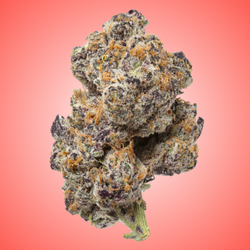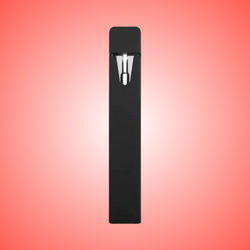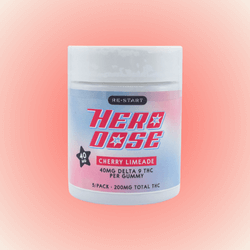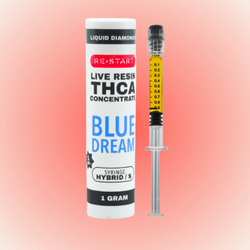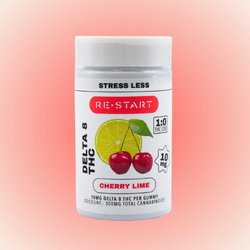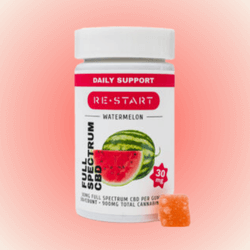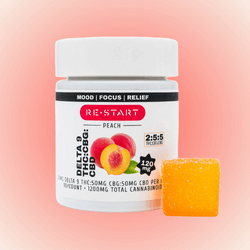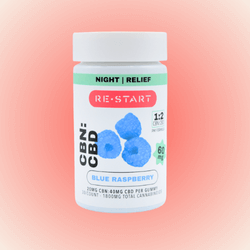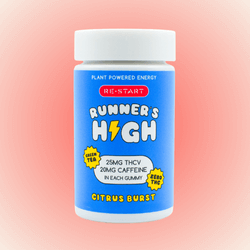What is CBG? Cannabigerol.
CBG is a compound found naturally in the cannabis plant.
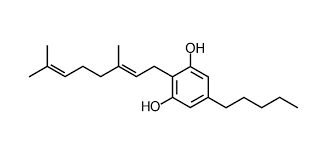
TIPS
CBG and CBD are very different, and it’s important to compare them in detail if you’re planning to use CBG for health reasons. There’s still a lot to learn about CBG, but we’ll share what we know in this FAQ-style guide.
CBG is a compound found naturally in the cannabis plant. It is one of the hundreds of unique compounds, known as cannabinoids. CBG, short for cannabigerol, is considered a “minor cannabinoid” because it only makes up about 1% of total cannabinoids.
Among the cannabinoids, CBG is best described as a stem cell. Just as our human stem cells serve as the framework for every differentiated cell in our bodies, each cannabinoid has its start as CBG. It’s only later that chemical changes are made to turn CBG into CBD, THC, CBN, or any of the other cannabinoids.
Tagged CANNABINOIDSCBG
#1 — What are the similarities between CBD and CBG?
- CBG is the parent molecule of THC and CBD. CBD and CBG, unlike THC, are non-psychoactive, meaning they won’t get you high.
- Both cannabinoids appear to exploit the body’s natural processes to promote healing.
- Chemically, CBD and CBG are quite similar—it’s possible that CBD is only one or two degrees of association away from the original “stem cell cannabinoid.”
CBD and CBG occur in different concentrations in the plant and have unique chemical structures. Isolated, each cannabinoid has its own beneficial properties, many that overlap, but when CBD and CBG are taken together, the benefits of the CBD last longer and are more pronounced. CBG also amplifies the other cannabinoids in full spectrum products.
#2 — Without CBG, THC and CBD wouldn’t exist.
In 1975, CBGa was discovered as the first cannabinoid to form in the cannabis sativa plants. There are over 100 cannabinoids and CBG is the the precursor to all of them. The cannabis plant creates CBG and then turns it into the more familiar cannabinoids like THC and CBD. Through an enzymatic process, CBGa is broken down into CBDa and THCa which is then transformed through heat into psychoactive THC and non-psychoactive CBD. The plants don’t want to leave CBG as CBG, they want to make it into other useful things, which makes it hard to find this compound in any real abundance, according to Ethan Russo, a medical doctor and one of the world’s foremost cannabis experts.
CBG hasn’t gotten a lot of attention, due to low concentrations, less than 1%, in plants with high THC content. That’s because breeding for CBG essentially inhibits a plant’s THC production. AND CBG seems to have the ability to level out the heavy aspects of THC.
Yet it is one of the most abundant compounds in the hemp plant’s early stages of growth. Scientists can usually find a significant amount of CBG in its acidic state (aka CBG-A). This is especially true for hemp plants versus marijuana.
It is the mother of THC and CBD. Before compounds like THC and CBD can exist, there must first be CBG.
As the plant matures, CBG-A often transforms into other cannabinoids like CBD-A, THC-A, and CBC-A. So, usually, you’ll only find about 1 percent of actual CBG once you harvest your strain’s buds.
All cannabinoids in the raw hemp plant are in non-active acidic forms(-A). It’s only when these compounds are heated through a process known as decarboxylation that they can exert their characteristic physiological effects.
There’s a growing body of evidence that CBG could be used on its own to help patients with certain conditions.
Chemical Properties – At the molecular level, CBG affects the body quite differently than CBD. It targets different receptors, and it interacts with different systems. Some degree of research has been done into CBG and its effects on humans, but we don’t know enough to make any definitive statements on the potential medical benefits or risks of using this cannabinoid.
Effects in the Body – CBG is generally reported as having a soothing, calming effect, and this cannabinoid does not have any notable side effects. Before we’re able to describe exactly how CBG might help people with physical, emotional, or psychological issues, more research will need to be done.
The potential benefits of CBG and the other cannabinoids is currently a subject of much debate. Consumers and manufacturers look to regulatory agencies like the FDA to provide clarity and guidance on these matters, but the status of cannabis remains confusing.
We don’t know a lot about the potential medical benefits of CBG, but we certainly want to find out more. And, we aren’t alone—millions of people around the world are very interested in cannabinoids, and this groundswell of support has propelled cannabis research to the next level. Many studies have already been done and all you have to do is search the internet to find out.
How much CBG is right for you will depend on many features, including your age, body weight, the conditions you want to treat, and any current medications you may be taking.
That being said, companies usually recommend taking no more than 5-10mg of CBG once or twice a day. For the best effects, drop the CBG liquid directly under your tongue and hold for a 60 seconds before swallowing. This technique, known as “sublingual ingestion” which helps your body fully absorb the cannabinoid before it goes through the digestive tract.
As with any new substance, start slowly and see how your body reacts to CBG. If you don’t notice any adverse effects, you could increase the dosage by a few milligrams per day until you achieve your desired result.
Since CBG is a non-psychoactive cannabinoid, it’s generally considered safe to use any time of the day. There’s currently little data on side effects related to CBG, however, as with CBD, you can not overdose, and the only side effect for most people may be drowsiness.
It’s a good idea to talk with your doctor before you consider using CBD or CBG, especially if you’re already on prescription medications. Because of its anti-inflammatory properties, it’s possible CBG could adversely interact with certain prescriptions.
#6 — CBG Oil Prices are Generally Higher Than CBD
Because CBG content only hovers around 1 percent in a standard cannabis plant, it should come as no surprise that CBG products are more expensive. To extract just a tiny vial of pure CBG oil, manufacturers usually have to go through thousands of pounds of hemp biomass.
Another reason that drives up CBG costs has to do with the enhanced technology and specialized extraction machinery necessary to accurately separate this molecule. Which means a higher price for the consumer.
It’s not uncommon to see small bottles of CBG tincture selling for anywhere between $50 to $200. When CBG is blended with CBD and other cannabinoids, the price is more affordable.
As Demand Increases, Hopefully CBG Costs Will Decrease
To help make CBG products more affordable, many cultivators are beginning to breed select strong-CBG strains of hemp. Breeding select strains with higher CBG levels, will mean manufacturers require less biomass to create more products.
In addition to developing high-CBG strains, some cultivators are deliberately harvesting cannabis plants earlier in the growing process. CBG-A is at peak levels very early on in the plant’s growth cycle. By carefully cutting these plants before CBG-A transforms, there’s a better chance of extracting higher quantities of CBG with less hemp.
#7 — What Are the Potential Benefits of CBG?
CBG is being studied for potential benefit in a myriad of health issues.
Every day we are hearing stories from our customers who can’t believe the changes happening in their lives. The more research we do, the more we’ll understand how these potent phytocannabinoids interact our system.
CBG may not be as popular as CBD, but interest in the cannabinoid is certainly growing.
- CBG is like a mood lifter. It acts like a balancing, grounding cannabinoid where it’s this feeling of euphoria and happiness without making you stoned.
- CBG amplifies the positives of the other parts of the plant. The way our bodies interact with CBG gives it a range of medical benefits, as well as reducing the paranoia-inducing effects of THC.
- While it’s benefits are becoming known, researchers around the globe believe it could have a significant impact on mental, physical and emotional health.
- CBG works with the body’s endocannabinoid receptors, and it appears to work with many other receptor systems as well. Research shows that CBG’s properties include: Sleep aid. Inhibits cancer cell growth. Promotes bone growth. Slows bacterial growth.
CBD is tranquilizing at higher doses and while a full spectrum CBD product includes small amounts of CBG as a sleep aid property, if you are seeking a more potent sleep aid product, then a CBD product that contains extra CBG may be the answer for you. RESTART CBG OIL contains no THC while our full spectrum products will contact <0.3% THC.
Of course, the main issue CBG has right now is its higher price. There are far more CBD-heavy hemp strains available to cultivators, and typically hemp plants have more CBD available to extract. This helps keep CBD products at reasonable levels compared with CBG products. If cultivators are able to produce reliable CBG-heavy strains, however, it’s likely CBG oil prices will drop in the years to come.
#8 — What is the Difference Between CBD and CBG?
- While CBD appears to act on the nervous system and immune system primarily, CBG appears to mainly interact with bacteria and exert digestive properties
- However, this cannabinoid also seems to interact with the GABA system, which is a primary neuronal signaling framework
- Talk with a doctor to learn about the potential medical benefits of CBG
Isolated, each cannabinoid has its own beneficial properties, many that overlap, but when CBD and CBG are taken together, the benefits of the CBD last longer and are more pronounced. CBG also amplifies the other cannabinoids in full spectrum products.
CBD works with FAAH (fatty acid amide hydrolase) to stimulate anandamide and the production of endocannabinoids in the body. If your system is over or under-producing, CBD helps to regulate it. CBG interacts with the receptors, and together they open the gates for healing.
CBG cannot get you high and is non-psychoactive. In fact, if you’ve overindulged in THC and need to come down, it’s been found that taking CBG will clear the THC receptors and you’ll be sobered up in no time.
#11 — Super powerful and super tasty!
ESTART CBD offers a completely unique CBG Oil that is a broad spectrum with high amounts of CBG, CBD, CBN, and CBC but NO THC.
This is the strongest CBG Oil on the market with (no sugar, 100% natural, organically grown in Colorado).
RESTART CBD is always looking for ways to give customers the most benefit from our products. We stay on top of the hemp research and incorporate the latest scientific findings. When we learned about CBG, an until recently overlooked phytocannabinoid, we knew we had to bring you products that incorporate it.
RESTART BROAD SPECTRUM CBG OIl is 20:1 strength CBD to CBG. It comes in a 40mg per mL strength
All CBG products are in flower form at one stage or another; after all, cannabinoids are exclusive to Cannabis sativa, and this annual plant presents its natural oils primarily in its flowering buds and close-growing “sweet leaf.” CBG flower is simply CBG in its natural form; it’s high-CBG hemp flower with incredibly low levels of THC.
In the past, CBG flower was only available in concentrations of around 1% or less. With our latest indoor crop testing at 15.4% CBG, it’s clear that the wait for high-quality, high-potency CBG flower is finally over. Previously, UNTENABLE COSTLINESS had kept CBG away from the masses.

